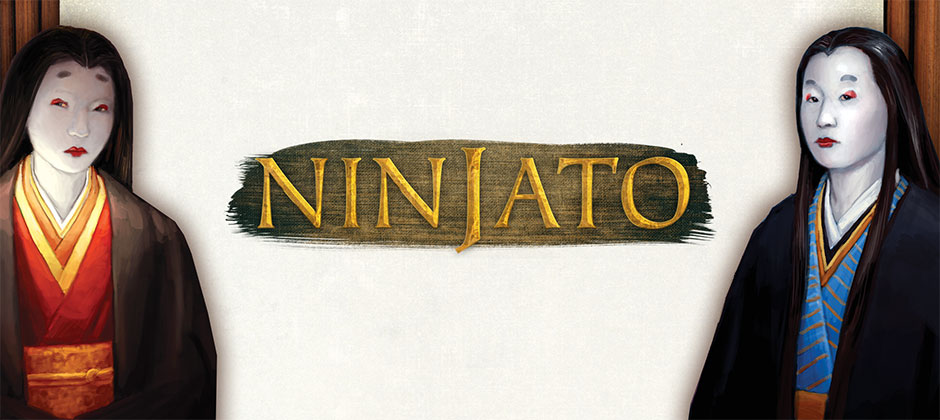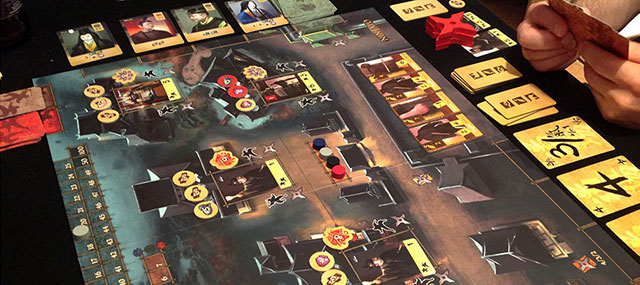
I got Ninjato back on the table last night, and was quickly reminded what a great game it is. Since I hadn’t played for a while, I also had occasion to use my own rules summary to refresh my knowledge of the rules, and found it a bit lacking in some respects, so I’ve gone back and reworded some sections—especially the clanhouse invasion and scoring rules— to make them a lot clearer.
Back in 2010 I worked with designer Adam West of Crosscut Games and illustrator Drew Baker on this game set in 12th century feudal Japan, and while it was a very long process and a lot of work, it was also a very enjoyable one. Adam was an excellent client and his dedication to making a really great game was apparent through every phase of the project.
Drew Baker did some stunning work on this game, bringing to life a huge range of characters, painting scenes and objects, and creating a beautiful and evocative board illustration. I created all the other graphics and prepared everything for print. As with any boardgame design job, this was a mammoth project, involving many versions that had to be designed, re-designed, tweaked and proofed—for me alone, some 100 hours of design work plus about 750 emails back and forth with the client. It also involved historical research, icon design, and a crash self-taught course in hand-drawn calligraphy; after buying a calligraphy brush and black ink, I went through scores of giant sheets of paper practicing numerals and Japanese characters until I had just the right ones to scan and use. Oh, and the bamboo texture was a scan of a placemat I bought from a shop that sold imported Japanese items.

In Ninjato, you raid clanhouses by either strength or stealth, defeating guards to gain treasure, which you then spend to buy envoys and rumours and ultimately to score the most honor. But since you only have three actions per round and a total of only seven rounds, you must choose your actions wisely.
The game feels quite unique to me in that, while it features such Eurogame-style mechanics as scoring, card collection, action selection and limited rounds, it also revolves around a very thematic push-your-luck mechanic, almost a minigame, that has the added advantage of allowing you to repeatedly call out Banzai! in a gruff, middle-aged samurai voice. So it’s also very thematic. The result is something that floats happily between the Eurogame and Ameritrash camps and doesn’t feel as if it’s expending any effort satisfying the needs of both.
If you missed it first time around, I recommend taking another look at Ninjato. Banzai!